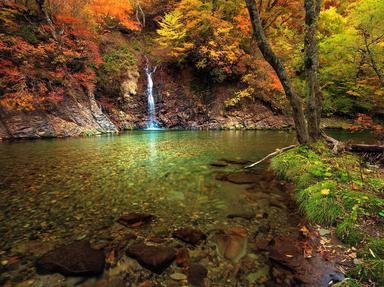Quiz Answer Key and Fun Facts
1. New Guinea is famous for its large population of beautiful birds. This bird in particular has a distinctive sickle-shaped head, a ridged beak which can reach up to 10 inches in length, and a predictably stunning display of colourful feathers (males only). The unusual structures of these bird's skulls has meant that they are hunted by local tribesmen, who wear the skulls as ornaments. Which bird is this?
2. This next wild beast is slightly less attractive. It roams the swamps of New Guinea, terrifying all who come across it and eating everything from tropical birds to eggs to rotten flesh. Which large lizard is this?
3. After recent exploration of the island, several new species were discovered on New Guinea. As most of these were types of insect, scientists were thrilled to find a new species of mammal. Which of these animals was discovered in 2009 during an expedition to the island?
4. It isn't just birds which thrive on the island of New Guinea, but reptiles too. Found in many areas in New Guinea, Australia, and other surrounding islands is a medium-sized (up to 37 cm) lizard - a type of skink. What colour, the colour of the inside of this skink's mouth, precedes "-tongued skink" to give the name of this lizard?
5. Another bird which lives in New Guinea is the megapode. This bird is unusual in that it does not incubate its eggs with body heat. How do megapode birds incubate their eggs?
6. As an island, New Guinea has a huge variety of animals which can be found in no other places in the world. These unique species can be completely new to us, or variations on familiar animals. This question is about the latter. Which rather odd creature can you find on the island of New Guinea, behaving in a way that its namesakes would definitely not?
7. The rainforest of New Guinea is also home to a variety of insects. What is peculiar on this island is a common killer of these insects. Which of these causes of death affects many ants on the island?
8. Off the coast of New Guinea, you will find a whole world of strange and wonderful creatures. One notable animal is the eeltail catfish. Although this creature sounds fairly mundane, it differs from most of its relatives in a large way. What difference is this?
9. The final and possibly most stunning New Guinean bird in this quiz is one noted for its brilliant courtship displays. The male of this species possesses extravagant, long, golden-brown feathers and a yellow and emerald head. Finally, this bird is the national bird of Papua New Guinea. Which bird is this?
10. Which animal, with species such as silky, mountain, and bear, and a name similar to that of a staple food in North Africa, was found by BBC documentary makers in 2009 to have a new sub-species on the island of New Guinea?
Source: Author
doublemm
This quiz was reviewed by FunTrivia editor
crisw before going online.
Any errors found in FunTrivia content are routinely corrected through our feedback system.

